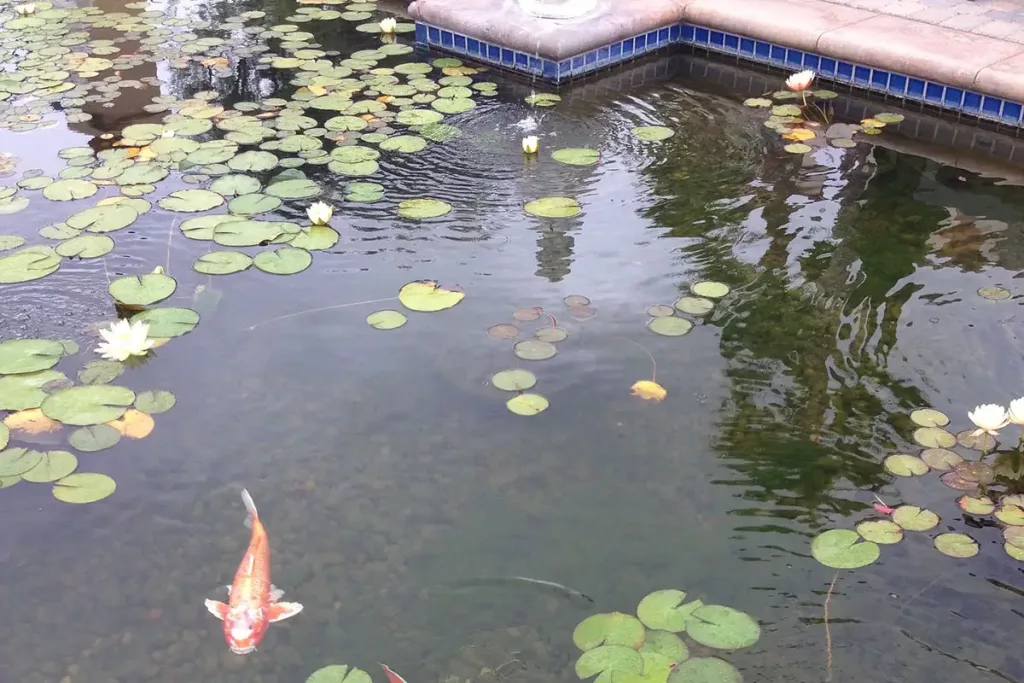
Winterizing A Koi Pond || There are sufficient differences between a koi pond and a normal pond, and thus it is fair to describe a koi pond before moving on to discussing the winterizing system.
It is mostly a hibernating water body made for specific fishes, and it has large-scale fishing facilities so that various fishes may accommodate, so nothing like a human pond or a bathtub or swimming area. There is a need for accommodating the big fishes in the backyard of houses, and the koi pond is, although not sufficient, a modernized version of the classical fish conversation system, one may say.
In Japan, it is believed by tradition that a koi pond is more likely to invite more luck and cause a sufficient amount of increment in natural pond beauty, which is quite a different aesthetic for someone who has been living in Japan. A specific breed of fish, known as Koi Fish, survives in the extreme winter being able to tolerate the freezing atmosphere and sustain long-term durations, although sufficient steps of winterization are needed.
Method 1: Pond netting and skilling layer trash
In Koi Pond, often as is seen in the Japanese pond outlets, a thick leaf blanket gets deposited. It becomes difficult to sustain in the cold winter due to that. The accumulation has been referred to as pond debris.
In Koi Ponds, the skimming of the debris will facilitate you to winterize your Koi Pond naturally, without taking you to pump out all the disputed water over a longer period. Many times, fish may die in the Koi Pond. During the winter season, this creates a problem as these fishes may not survive the harsh weather because of the coagulation of the excessive dead fish layer deposits on the top.
Pond netting is one of the most advanced systems of skimming out the dead fish or leaves along the pond, where a koi pond may be skimmed out by making the net stretched over the edge of the water’s surface.
Winterization using pond netting is the beginning to make the water fresh, and you may also measure the water temperature daily, to know if the optimum temperature is reached at which the edging needs to be done. You need to stop the system of regular feeding, because during this time, the fishes will be hibernating, and the wart temperature getting too much down will make these fishes survive off of the water for a long period. This is why it is wise to create the netting thing before the onset of winter and let the fishes survive without having a thick layer of dry and dead fish over the water’s surface.
Cutting out all the possible plants and leaves from the edge of the pond and making a suitable system of turning out the water pond to be more or less optimum for the fish to breathe during winter is the first step towards winterization.
Method 2: Adding additional natural organisms and shutting down the water supply
You should shut down the water supply to the main pond before an immense water-freezing cube is found within the pond. Running water during the winter will never be the best way of winterizing because the constant turn up of water will eventually freeze a large section of the pond over time.
To start, getting the main water pumping system to be logged off and turning off the supply will ensure that the pool will not get to the freezing point soon, and create a covering ice blanket on the top of the pool.
Draining a koi Pond is quite challenging because of the expansive area, and oxygenating all the water inside the pool is a difficult system, so reducing the capacity of water in the pool is a lifesaver.
Method 3: Optimal heating and a few additional precautions
There are a few precautions to take counter the problem of frozen ponds, and a de-icer may be one of them for you. You can easily buy a second-hand one below $100 and also a refurbished one from any e-commerce merchant site, which will assure you of better thermal protection at all costs.
Koi pond is not a pond but rather an expense of water that has a sufficiently large amount of water capacity, which is why it is needed that you use temporary heating devices fitted under the water that can optimally heat the pond. Aerosol sprays are available for $60, which are great use to defrost the light glasses that may be used to let your Koi Pond get frozen in the night, and have a better heating module.
Reducing food for fishes, and fitting a UV sunray panel to heat your Koi Pond edge by reflection are all quick ways that you can adopt to winterize your Koi pond below $100. Read More>>
Leave a Reply